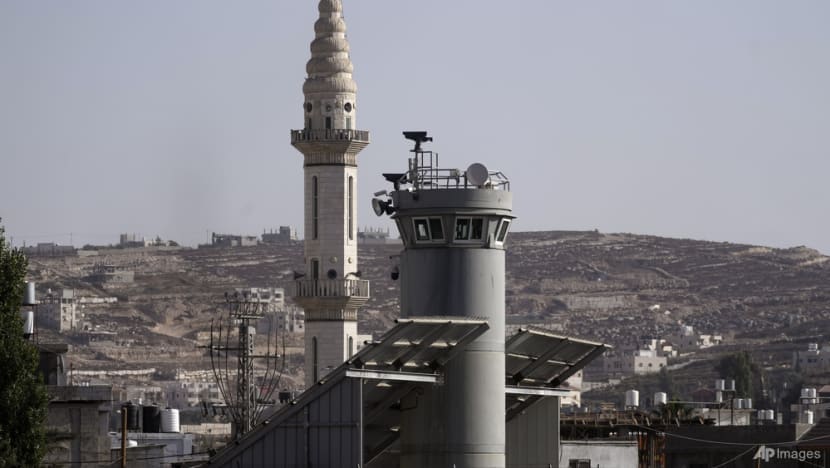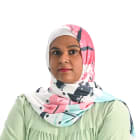ICRC voices concern over loss of human control in weapons amid use of AI
Technological advancement cannot be an excuse to disrespect international humanitarian law, says ICRC president Mirjana Spoljaric.

An Israeli military guard tower with two robotic guns and surveillance cameras at the Aroub refugee camp in the West Bank, Thursday, Oct. 6, 2022. Israel has installed robotic weapons that can fire tear gas, stun grenades and sponge-tipped bullets at Palestinian protesters. The robots, perched over a crowded Palestinian refugee camp and in a flash point West Bank city, use artificial intelligence to track targets. (AP Photo/Mahmoud Illean)

This audio is generated by an AI tool.
SINGAPORE: Countries in conflicts need to ensure that weapons, including those used to target objects, “remain under full human control” even as artificial intelligence shakes things up, the International Committee of the Red Cross (ICRC) said on Sunday (Jun 2).
This is as the future of warfare will be largely influenced by the accelerated development of new technologies and the addition of AI, said ICRC president Mirjana Spoljaric.
Such advanced technology is likely to extend to how operations are conducted, what weapons will look like and how they will be employed, she said.
“What we are very concerned about is the loss of human control when artificial intelligence comes into play,” she told CNA on the sidelines of the Shangri-La Dialogue.
She added that beyond human control, full cognitive capacity is needed.
“We cannot allow machine learning to influence and accelerate the range and the duration of military operations, without a constant full influence of the human capacity to define who is being targeted,” she said.
“In short, what we demand is a new regulatory framework that will ban weapons that are becoming unpredictable due to the integration of artificial intelligence and weapons that are potentially unpredictable, but still can target humans,” she added.
UPHOLDING HUMANITARIAN PRINCIPLES
When asked how humanitarian principles can be upheld in the context of increasing automation and technology in warfare, Ms Spoljaric said, as a principle, international humanitarian law applies.
“As a principle, international humanitarian law will always apply and technological advancement can never be an excuse not to respect international humanitarian law and not protect civilians, and not to uphold the principle of prioritising the preservation and protection of human dignity,” she said.
“If the current architecture of humanitarian agreements doesn't suffice to adequately respond to these new technologies and how they're continuing to evolve, then we need new and additional normative frameworks,” she added.
Ms Spoljaric noted that the ICRC’s humanitarian work in Gaza is “extremely dangerous” at the moment.
“Humanitarians come under fire regularly - they even lose their lives. It is well-known that the number of humanitarian workers who lost their lives in Gaza exceeds everything that we have experienced in the past decades,” she said.
The United Nations said in April that at least 224 humanitarian personnel have been killed in Gaza during the ongoing conflict, more than three times as many humanitarian aid workers killed in any single conflict recorded in a single year.
CONSTRAINTS FOR HUMANITARIAN ASSISTANCE IN GAZA
“The multi-dimensional constraints for humanitarian assistance in Gaza are indescribable. Levels of humanitarian fallout are indescribable,” said Ms Spoljaric.
“There's no adequate amount of coordination that would give us the necessary security guarantees to move,” she added.
She noted that lines of military operations are conflicting with the lines of humanitarian supply and compounds challenges for humanitarians trying to bring in supplies.
“There is a lack of everything,” she added.
“You have to protect civilians. You cannot bring operations close to civilians without making sure that they have places to go and places to go where they remain safe, where they have access to what they need, where they have a possibility to acknowledge their dignity as humans. This currently in Gaza is very difficult to achieve,” she said.
CLIMATE CHANGE AND HUMANITARIAN ASSISTANCE
Ms Spoljaric also spoke about the “vicious circle” between climate change and violence in regions the ICRC operates in.
She noted that for instance, if there is no rain, food insecurity increases and people “tend to employ violence to survive”. This is given that a majority of the population may be dependent on agriculture and livestock, she said.
“We cannot exclude the impact of climate change and conflict dynamics and more. It is our daily reality that we have to work with,” she said.
She added that large-scale investments in medicine and climate change adaptation need to happen in regions that have potential for armed violence, or where it is already happening.
Investments in agriculture are also crucial, she added. She gave examples of providing more efficient water systems and working with farmers to put in place more sustainable practices.
“Delivering bags of food and trucking water around are the least efficient and the least sustainable ways of providing humanitarian assistance in situations of protracted conflict,” she said.















